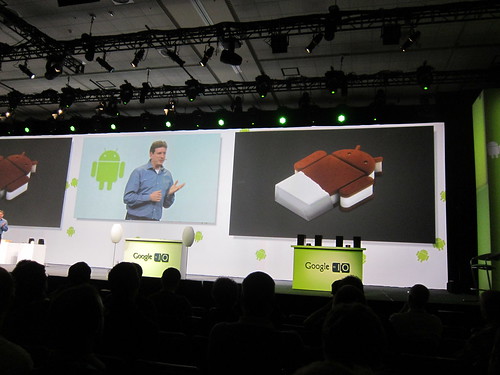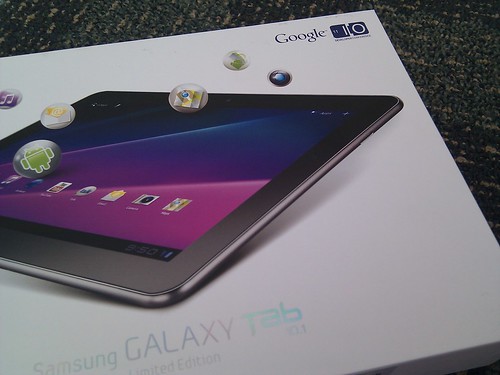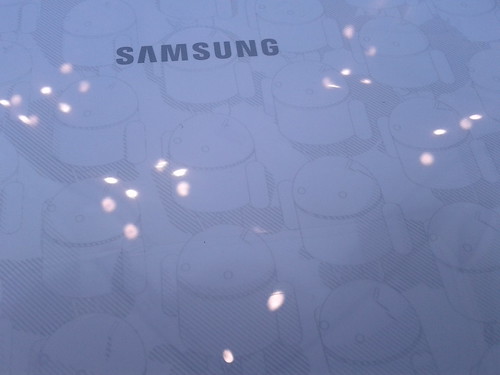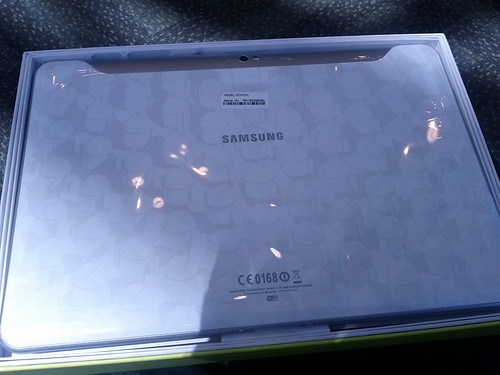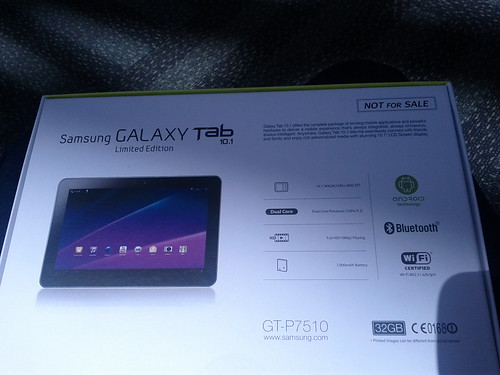관련링크
Google IO 2011 Session
이번에 열릴 Google IO 2011의 안드로이드 세션 목록들입니다.
구글 안드로이드팀의 주요한 관심사, 그리고 현재 모바일 시장의 흐름이 어떻게 되는지 제목을 보고 대략적으로 알수 있습니다.
이 내용들 다 소화해서 이해할지가 궁금하군요. 공부할 내용은 산더미이고, 실력은 늘어나는 것 같지도 않고.
3D Graphics on Android: Lessons learned from Google Body
May 11, 04:15PM – 05:15PM / Room 8
Nico Weber
Google originally built Google Body, a 3D application that renders the human body in incredible detail, for WebGL-capable browsers running on high-end bPCs. To bring the app to Android at a high resolution and frame rate, Nico Weber and Won Chun had a close encounter with Android's graphics stack. In this session Nico will present their findings as best practices for high-end 3D graphics using OpenGL ES 2.0 on Android. The covered topics range from getting accelerated pixels on the screen to fast resource loading, performance guidelines, texture compression, mipmapping, recommended vertex attribute formats, and shader handling. The talk also touches on related topics such as SDK vs NDK, picking, and resource loading.
Accelerated Android Rendering
May 11, 10:45AM – 11:45AM / Room 9
Romain Guy, Chet Haase
Android 3.0 introduced a new hardware accelerated 2D rendering pipeline. In this talk, you will be introduced to the overall graphics architecture of the Android platform and get acquainted with the various rendering APIs at your disposal. You will learn how to choose the one that best fits your application. This talk will also deliver tips and tricks on how to use the new hardware accelerated pipeline to its full potential.
Android + App Engine: A Developer's Dream Combination
May 10, 03:45PM – 04:45PM / Room 9
Xavier Ducrohet, Brad Abrams
This talk will introduce App Engine Tooling for Android. A complete set of Eclipse-based Java development tools for building Android applications that are backed by App Engine. With these tools developers can focus on building fantastic Android applications using common tools and techniques that span the client and server parts of the application AND make it extremely simple to deploy the server side to App Engine. This talk walks through building a fantastic cloud based android application.
Android Development Tools
May 11, 03:00PM – 04:00PM / Room 11 LIVESTREAMED
Xavier Ducrohet, Tor Norbye
This talk provides an in-depth look at the Android development tools, along with tips & tricks for getting the most out of them. From project support, to source editing and visual editors, to emulator execution and debugging and profiling, this talk will help you get more productive with Android development. The main focus is on Eclipse, but we will discuss other complementary tools as well. This is a demo-oriented talk, and our goal is to show the available features, and how they fit into the workflow.
Android Market for Developers
May 11, 10:45AM – 11:45AM / Room 11 LIVESTREAMED
Eric Chu
There are few things developers care more about than Android Market and, during the year since Google IO 2010, we have been investing huge amounts of efforts in expanding and improving it. This presentation walks through what's new, with a particular focus on where developers can take action to improve their apps' Market performance.
Android Protips: Advanced Topics for Expert Android App Developers
May 10, 11:30AM – 12:30PM / Room 11 LIVESTREAMED
Reto Meier
Writing an app is easy, but with 100k competitors you need to do better than launch and cross your fingers. I'll demonstrate how to use advanced Android techniques to take a good app and transform it into a polished product. Features advanced coding tips & tricks, design and implementation patterns, and insight into some of the lesser known API features. This is an advanced session designed to help experienced developers.
Best Practices for Accessing Google APIs on Android
May 10, 11:30AM – 12:30PM / Room 9
Yaniv Inbar
Integration with Google APIs (such as Buzz, Latitude and Translate) can enrich many Android applications. In this session, we will demonstrate how to do so easily, efficiently and securely using the Google API Client for Java. We’ll walk you through how to authenticate for the APIs using AccountManager, how to reduce the client library size and several other Android-specific optimizations.
Bringing C and C++ Games to Android
May 11, 03:00PM – 04:00PM / Room 8
Ian Ni-Lewis and Dan Galpin
Want to make great Android games, but you're not a Java programmer? This talk is for you. Android supports a toolchain for building applications in C/C++. In December 2010 it got a makeover specifically aimed at making life better for game developers. This presentation gives an introduction to Android programming in C/C++, covers what's new and improved since last year, and shows best practices for building and debugging games with the NDK.
Building Aggressively Compatible Android Games
May 11, 10:45AM – 11:45AM / Room 8
Chris Pruett
There are a lot of Android phones out there, but by abiding to a few key rules it is possible to develop a single binary that runs on all of them. This session will explain how to approach device diversity and build aggressively compatible Android games.
Building Android Apps for Google TV
May 11, 01:45PM – 02:45PM / Room 11 LIVESTREAMED
Jason Bayer, Christian Kurzke
Learn how to create new apps or enhance existing Android apps for Google TV. Session includes an overview of the platform, best practices, demos, and discussion about the fantastic opportunities Google TV creates for developers.
Designing and Implementing Android UIs for Phones and Tablets
May 11, 12:30PM – 01:30PM / Room 11 LIVESTREAMED
Roman Nurik, Adam Powell, Richard Fulcher, Christian Robertson, Matias Duarte
There are a large number of Android tablet devices starting to ship. This session discusses the new APIs and tools available to developers for use in constructing apps that work well on them, and provides guidance on creating good user experience for users of these devices.
Don’t just build a mobile app. Build a business.
May 10, 01:15PM – 02:15PM / Room 11 LIVESTREAMED
Wayne Pan
Learn how to build a business on mobile apps so you can quit your day job. Walk away with an understanding of app business basics and how to use house ads for app promotion, mediation to optimize in-app advertising revenues and analytics to measure real ROI.
Evading Pirates and Stopping Vampires using License Verification Library, In-App Billing, and App Engine
May 11, 01:45PM – 02:45PM / Room 8
Dan Galpin, Trevor Johns
This session talks about best practices for using the License Verification Library and In-App Purchases on Android Market. It also explains how to integrate a server-side component for license validation and content delivery, describing the reference implementation that we built using App Engine.
Fireside Chat with the Android Team
May 10, 02:30PM – 03:30PM / Room 11 LIVESTREAMED
Dan Bornstein, Debajit Ghosh, Dave Sparks, Xavier Ducrohet, Jeff Hamilton, Andy Stadler, Dan Morrill, Dianne Hackborn, Rebecca Schultz Zavin, Chris Di Bona, Ficus Kirkpatrick
Join us for an informal developer-oriented discussion of what's been going on in the world of Android.
Honeycomb Highlights
May 10, 10:15AM – 11:15AM / Room 11 LIVESTREAMED
Romain Guy, Chet Haase
Android's "Honeycomb" release includes a large number of new features, capabilities, and APIs to access them. This session gives a high-level view of everything that's new, with special focus on how this affects developers' lives and what they should be paying attention to.
How to NFC
May 10, 03:45PM – 04:45PM / Room 11 LIVESTREAMED
Nick Pelly, Jeff Hamilton
Gingerbread brings a comprehensive NFC reader/writer API, and some modest but surprisingly powerful P2P support. Come hear why you should care about NFC technology, what kinds of applications are possible right now, and best practices for deployment.
HTML5 versus Android: Apps or Web for Mobile Development?
May 11, 03:00PM – 04:00PM / Room 9
Reto Meier, Michael Mahemoff
Native apps or mobile web? It's often a hard choice when deciding where to invest your mobile development resources. While the mobile web continues to grow, native apps and App Stores are incredibly popular. We will present both perspectives in an app development smackdown.
Leveraging Android Accessibility APIs To Create An Accessible Experience
May 10, 10:15AM – 11:15AM / Room 9
Charles Chen, T.V. Raman, Tim Credo
The Android framework includes a set of easy-to-use APIs that enables the creation of third-party accessibility services such as screenreaders for the blind. In this talk, we'll give an overview of the Accessibility API, describe some of the most widely used services, and explain how to fully unlock the accessibility potential of the Android platform.
Memory management for Android Apps
May 11, 04:15PM – 05:15PM / Room 9
Patrick Dubroy
Android apps have more memory available to them than ever before, but are you sure you're using it wisely? This talk will cover the memory management changes in Gingerbread and Honeycomb (concurrent GC, heap-allocated bitmaps, "largeHeap" option) and explore tools and techniques for profiling the memory usage of Android apps.
Optimizing Android Apps with Google Analytics
May 11, 12:30PM – 01:30PM / Room 9
Nick Mihailovski, Philip Mui, Jim Cotugno
Thousands of apps have taken advantage of Google Analytics' native Android tracking capabilities to improve the adoption and usability of Andriod Apps. This session covers best practices for tracking apps on mobile, TV and other devices. We'll also show you how to gain actionable insights from new tracking and reporting capabilities.
Taking Android to Work
May 11, 04:15PM – 05:15PM / Room 11 LIVESTREAMED
Fred Chung, Andy Stadler, Gabe Cohen
More and more people are bringing Android devices into enterprise environments. This talk will cover general enterprise adoption considerations and related Android features. We will also provide an overview of security issues, managed internal app development, corporate app directories, and an in-depth look at a sample implementation of device management policies.






 Buy me a coffee
Buy me a coffee








